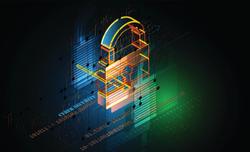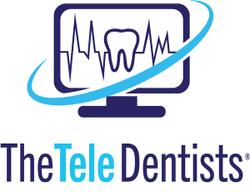- About Us
- Advertise
- Editorial
- Contact Us
- Terms and Conditions
- Privacy Policy
- Do Not Sell My Personal Information
© 2025 MJH Life Sciences™ and Dental Products Report. All rights reserved.
Knowing what PPE can and should be reused in dental practices can be tricky
Knowing what PPE can and should be reused in dental practices can be tricky. Guidelines, requirements and suggestions can make decisions difficult when deciding what PPE can be reused, and what should be cleaned or disposed after each use.
There’s plenty of concern about the supply of much-needed PPE as dental practices around the country do their best to attempt to get back to business in a somewhat normal capacity.
But while practices have been scampering for the most part for several weeks to get their hands on enough high-quality masks, face shields, gowns and other recommended products designed to stave off the spread of the coronavirus, there have been plenty of questions about what can and cannot be re-used, sterilized or even used more than one time before being be replaced.
How often can level 3 masks be used? The same goes for N95 masks. And should clinicians swap out their gowns each time they enter an operatory to check on a patient, or only after certain procedures or if the gowns have been soiled? These are just some of the many often confusing questions asked by an industry looking to return to full schedules and the ability to safely protect all patients and team members from the potentially dangerous spread of the virus that causes COVID-19.
The CDC recently published “Guidance for Dental Settings” in its Interim Infection Prevention and Control Guidance for Dental Settings During the COVID-19 Response. More details on these guidelines can be found on the CDC website along with new guidance directly related to providing care for patients with suspected or confirmed cases of COVID-19 - https://www.cdc.gov/coronavirus/2019-ncov/hcp/infection-control-recommendations.html.
In regards to healthcare personnel, these guidelines state that dental healthcare personnel (DHCP) must receive training on and demonstrate an understanding of:
- when to use PPE
- what PPE is necessary
- how to properly don, use, and doff PPE in a manner to prevent self-contamination
- how to properly dispose of or disinfect and maintain PPE
- the limitations of PPE
Additionally, dental facilities must ensure that any reusable PPE is properly cleaned, decontaminated, and maintained after and between uses. Dental settings also should have policies and procedures describing a recommended sequence for safely donning and doffing PPE.1
DHCP should wear a surgical mask, eye protection (goggles, protective eyewear with solid side shields, or a full-face shield), and a gown or protective clothing during procedures likely to generate splashing or spattering of blood or other body fluids, the CDC adds. 1
But just how can dentists stay on top of all the constantly changing recommendations and guidelines and also determine which of these sets of “rules” really apply to them.
Dr. Jason Goodchild, who practices in Havertown, Pennsylvania, and also is the vice president of clinical affairs for Premier Dental Products, Co., admits that all the information thrown at dentists during this pandemic can be a bit overwhelming.
“One of the problems is that there's so many messages coming at dentists right now. Should you listen to the ADA, or the CDC, is it OSHA, or maybe OSAP, or is it your dental board,” he says. “You’re being sort of overwhelmed by a tsunami of information. And it's hard to understand who we’re to listen to because in the ADA and even in the FDA guidelines, some of the updated information talks of recommendations, you know, they're not guidelines, they're not rules. They're not required so that's a really confusing message.
“It’s important to remember that the ADA makes guidelines, the CDC generally makes guidelines, but your state board or your department of health for your jurisdiction is in charge of making the rules,” Goodchild says.
“So at the end of the day, you know, it's great to listen to thought leaders because you're able to understand best practices, potentially, but you know how it boils down to each individual state’s rules is what you actually have to listen to. That’s where sometimes those messages don't align and when they don't, I think the dentists feel like what should I do? They might wonder if their state doesn't go as far as the ADA or CDC does, in terms of masks or other PPE, then if something happens in their office they could be opening themselves up to potential lawsuits.”
Goodchild says demand for PPE such as masks has driven the costs up substantially, making it all the more important to understand what can be reused and what can be cleaned. He adds that some forms of new reusable PPE have built-in sterilization qualities and also can help save the environment from a large increase of disposables.
“I still believe that in a lot of ways, disposable is a very good idea, but we're now developing things like sterilizing the N95 masks and we're also now working into this idea of reusable gowns, masks and head covers and things like that.”
Some masks now contain particles in the threads of the textile that are anti-viral and this may help dentists safely reuse the masks. “So, maybe you're able to reuse some of this stuff which is fantastic for two reasons,” Goodchild explains. “One, I think when you factor in how many masks you use over a year and how much that costs, versus a reusable piece of equipment, there's probably a cost savings. But there's also an environmental savings with so much less in the landfills. We can move towards reusing it or finding washable textiles that have some good filtration, good protection, good antiviral and antibacterial properties. I think that that's an amazing way to go.”
Dr. Jennifer Sanders, who owns Frenchtown Dental in Montana, a state with one of the lowest numbers of reported COVID-19 cases in the country, says her team typically uses level 3 masks for procedures that are not aerosol producing. For treatments that do produce aerosols, they use N95 masks.
Frenchtown Dental has been doing a lot more laundry since reopening from the mandated shutdowns, constantly washing lab coats and gowns to ensure the staff is wearing clean apparel in the operatory. In terms of all the guidelines out there, she suggests, like Goodchild, that dentists read up on all the recommendations and the science backing them up, but also keep in mind state regulations and that not every guideline is best suited for every state and every practice.
“I think anytime you're dealing with something like OSHA guidelines, they're always a little bit difficult to navigate to be quite sure,” Sanders says. “I think often the guidelines are written with a certain amount of leeway because not everybody's in the same situation so they can't apply all guidelines. You know they can't be too strict with it, but that can then be difficult to interpret.”
She adds, “So while I appreciate the guidance we've been given, I'm not necessarily sure we have all the necessary data on this whole situation. There's just a lot of things we don't know about this virus right now.”
The ADA issued a publication titled Extending the Use of N95 Masks and it includes a resource from the National Institute for Occupational Safety and Health (NIOSH). As part of its Pandemic Planning resources, NIOSH developed its Recommended Guidance for Extended Use and Limited Reuse of N95 Filtering Facepiece Respirators in Healthcare Settings, to help dentists and other healthcare personnel assess the applicability of both options. The ADA publication also includes a CDC Summary for Healthcare Facilities: Strategies for Optimizing the Supply of N95 Respirators during the COVID-19 Response available by clicking here.
“It’s all about science and data. In other words I look to the CDC and I look to the ADA to not delve into the panic and politics of things,” Dr. Jeff Lineberry says of all the new guidelines. “We need to look at all this in a certain manner and look at the true science of it and say okay, based off of science, this is what we meant and this is what you should do, versus well here's a lot of recommendations and we really don't know what to tell you.
“I think everybody has the same comments, the same thought processes about this. The reality of it is that we've got a situation that people don't have a lot of answers to right now, or they’re making a lot of decisions based off of non-science.”
The best advice for now may be for dental practices to stick with their stringent infection control protocols, add in new methods of proven effective steps to combat the spread of viruses and diseases, and to do their very best to stay informed as health officials and trusted organizations continue to research best methods and to provide updated recommendations.
“I always like to joke that you really can't be in the dental profession if you're a germaphobe, because you're dealing with infection control everywhere you turn,” Goodchild says. “You're talking about gloves, masks, eye protection and gowns and you're thinking constantly about how to handle hard surfaces, how to handle materials and dispensers and some of which can't get sterilized. So for those items we're dealing with barrier protection and so, we're very well equipped to handle these types of things.”
It’s easier said than done, but dentists need to read up on all the various guidelines and decipher from there what is actually required and what is best for both the patients and the staff.
References
1. Guidance for Dental Settings, Interim Infection Prevention and Control Guidance for Dental Settings During the COVID-19 Response, Centers for Disease Control and Prevention; https://www.cdc.gov/coronavirus/2019-ncov/hcp/dental-settings.html#PPE; accessed June 3, 2020.



